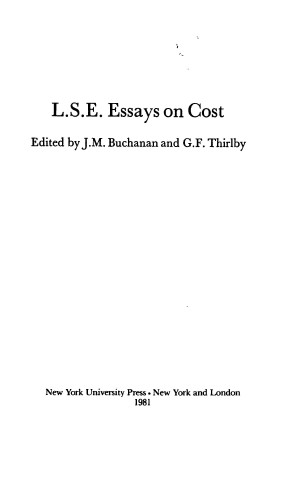
L.S.E. Essays on Cost
- James M. Buchanan (editor)
- G.F. Thirlby (editor)
A volume in the collection Studies in Economic Theory first published by the Institute for Humane Studies. This is a collection of essays written in the LSE opportunity cost tradition by scholars associated with the London School of Economics between 1937 and 1960. The papers are by Lionel Robbins, Hayek, Edwards, Coase, Thirlby, and Wiseman.